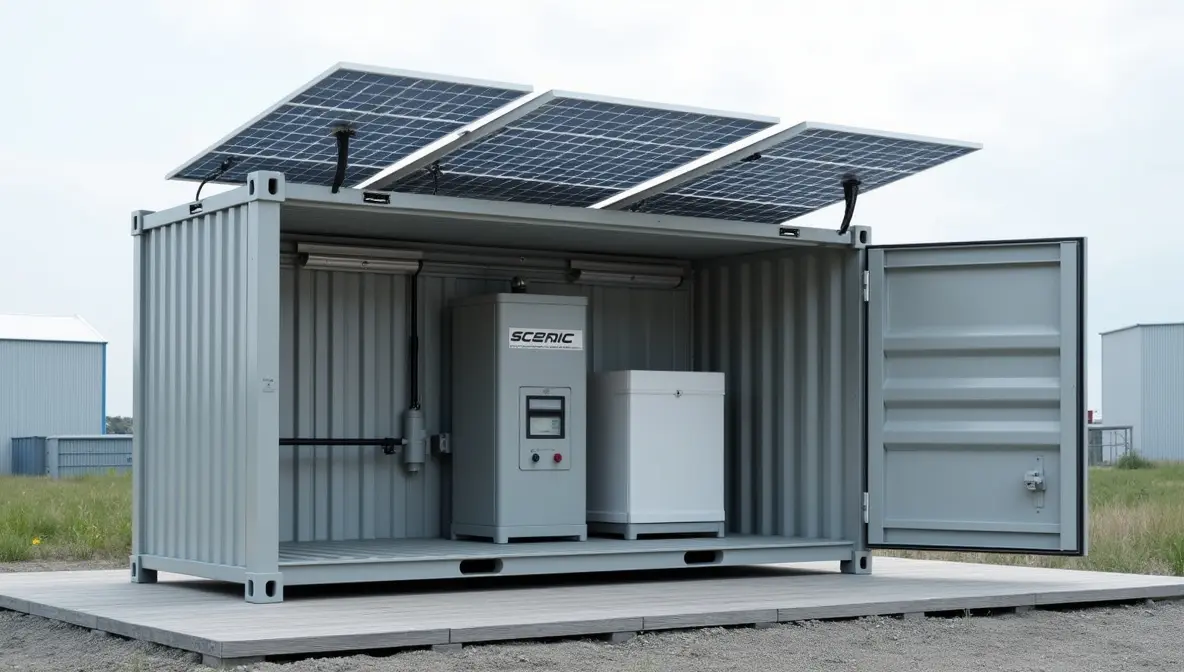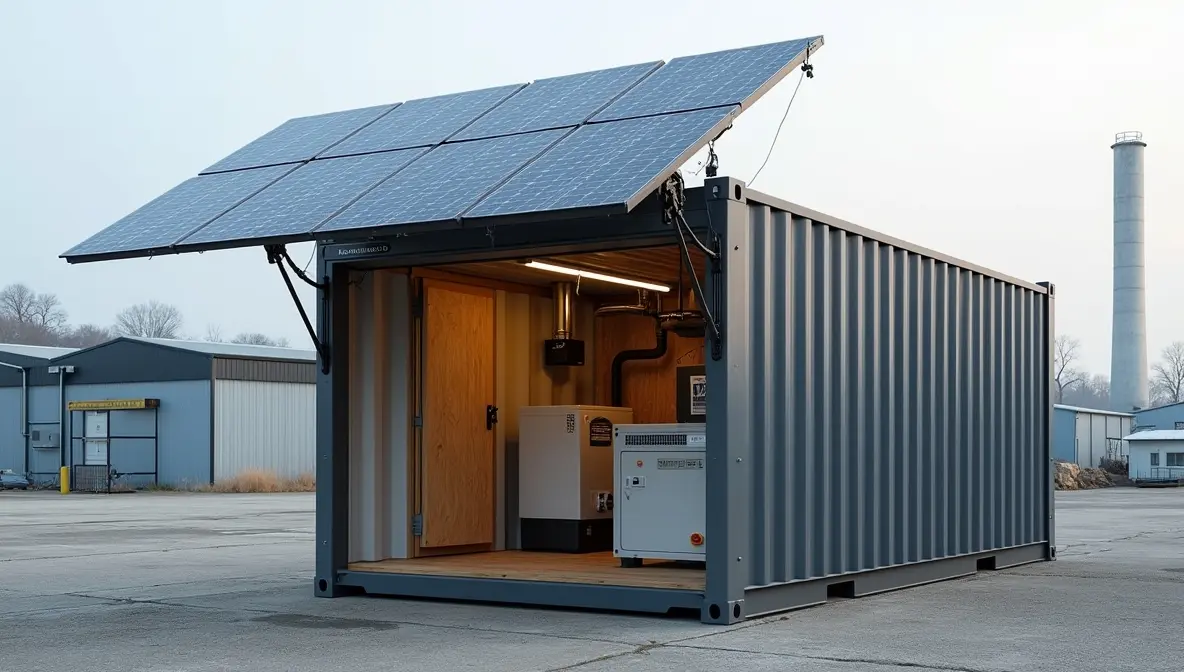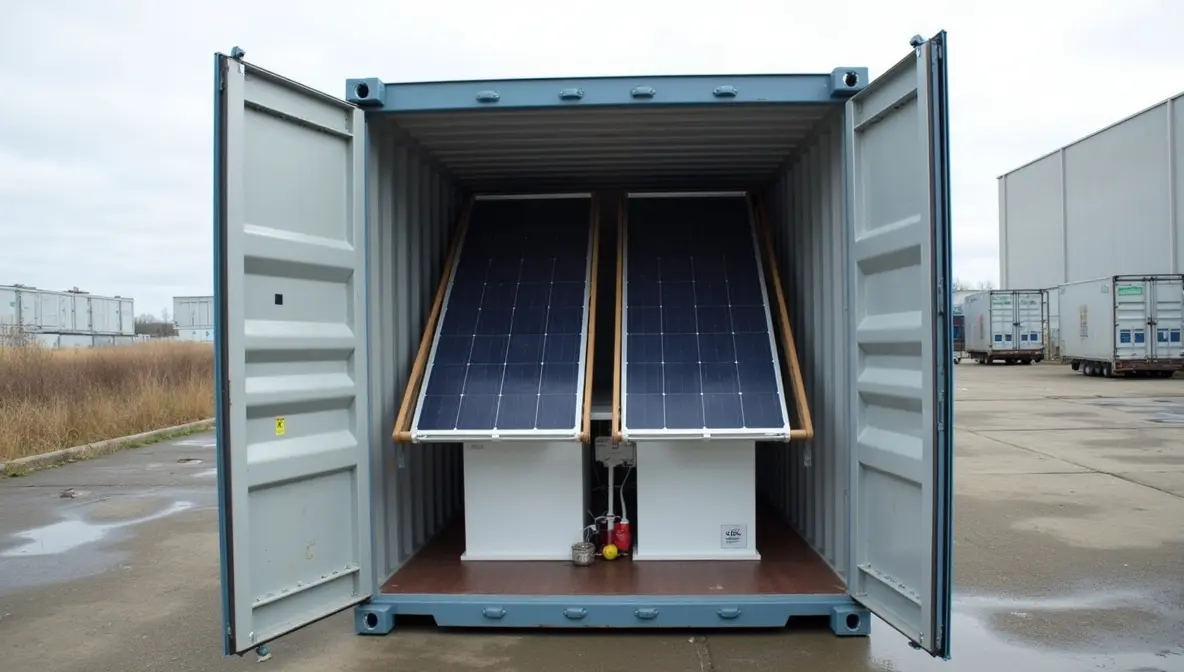To Master the Vertical Packing Technique of Photovoltaic Panels, learn first why it's been such a buzz for mobile deployment, what techniques make it valuable, and how to perform it safely and effectively. Vertically stacked panels significantly increase shipping density, reduce handling damage, and enable on-site deployment—especially in foldable systems where panels slide or hinge out of the shipping unit. Innovations such as the LZY-MSC2 Sun tracking Mobile Solar PV Container utilize intelligent rail mechanisms and dense stacking to stow away dozens of panels in a 20-ft ISO footprint, delivering up to 138 kWp in a sub-20 t unit. Whether equipping a remote microgrid, event power hub, or disaster-relief compound, vertical packing mastery gets your panels to site safe, sound, and ready to deploy.

Audience and Content Analysis
Renewable-energy planners, logistics coordinators, and project engineers that need to pack, ship, and deploy photovoltaic arrays in a hurry are the project's intended audience. They need clear specs, good case studies, and easy-to-follow instructions.
Why Vertical Packing is Relevant
Optimizing Transport Efficiency
- Higher Panel Density: 240 photovoltaic panels vertical-racked in a shipping container versus ~24 flat-stacked on a roof at over 80% reduced shipping costs.
- Damage Reduction: Edge panels minimize surface contact and abrasion, saving delicate cell glass and frames from transport-induced stress.
Successful On-Site Management
- Instant Deployment: Fold systems like SolarCont's allow panels to be slid out on telescopic rails—no giant cranes needed—with 120 m of array installed by four individuals in a day.
- Safety & Ergonomics: Vertical packaging puts panels at waist height, removing manual lifting and bending injury risks.
What Is Vertical Packing for Photovoltaic Panels?
Vertical packing is the stacking of PV modules on vertical racks in a shipping trailer or container. The key features are:
- Rail & Hinge Systems: Heavy-duty rails transport panels; rugged hinges allow panels to swing or slide out.
- Lock-down Clamps & Straps: Secure modules during transport and automatically release when folded open.
- Integrated Docking Points: Container wall corner fittings to ISO standard for stacking anchor and rack-attachment points.
How to Pack Photovoltaic Panels Vertically
1. Condition the Interior of the Container
- Line walls with IP65-rated corrosion-resistant beams.
- Install adjustable rail brackets 600 mm apart based on panel widths.
2. Racks Installation
- Install GroundRackor equivalent channel rails with a slight slope (2–3°) for water runoff.
- Fasten using reinforced bolts into container side rails, pre-drilled for precision.
3. Panel Loading and Fastening
- Photovoltaic modules are loaded vertically: slide each 72-cell module into rail slot with busbars facing inwards to be protected.
- Mid-clamps and end-clamps at every 800 mm, and ratchet-strap rack to floor for seismic or transit protection.
4. Deployment Mechanism Setup
- For Mobile Solar Container solutions, install actuators to central control box.
- Dry-running: pull out and slide panels for easy working before mounting into trucks.
Real-World Examples and Case Studies
- Scandvolt 138 kWp Solar Container: Houses 276 panels vertically two sides, deploys to 120 m of array in under 45 minutes, powering remote mine sites with guaranteed output.
- ECOSUN Mobil-Grid® Solarfold: 130 kWp high-cube container volume with motor and vertical stuffing with folding, rolled out to cyclone-devastated Caribbean islands.
- SunnyCal Solar 20 ft Support Kit: Provided 6–24 panel vertical racks to retrofit, making standard 20 ft containers one-day ad-hoc solar power generators.
Industry-Specific Terminology and Trends
- Tilting Rails: Pre-set rails for optimal season tilt (latitude ± seasonal adjustment) for maximizing insolation.
- Fold-Out Wings: Panels extend on either side of the container, doubling array area without footprint increase.
- Sun tracking Mobile Solar PV Container: Employ two-axis trackers for 35% improvement over fixed arrays.
- CSC Certification: Certifies containers to comply with maritime safety and stacking requirements, if vertical racks create wind-load surfaces.
Actionable Vertical Packed Success Tips
- Standardize Panel Sizes: Employ standard sizes (e.g., 1 m × 2 m) for simplifying rail spacing.
- Check Rails Yearly: Inspect slider wear and grease hinged joints to prevent jamming.
- Test Loaded: Perform loaded deployment testing under full panel load before the first mission.
- Record Procedures: Document a "how-to" procedure with rack layout drawings and fastener torque specification for every fastener.
Mastery of vertical packaging creates each shipment container a 20ft Container Solar Energy Innovation center, making your PV modules as agile as your next project.


